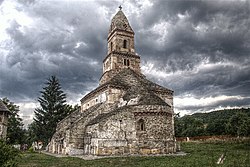Greetings and Salutations, y'all...
I realize I've been kinda quiet so far this month. To be fair, there's been a lot going on as I am getting ready to do a bit of guest blogging for some really excellent people in the next few weeks. Here's a quick shout out with some links to their stuff:
Thomas Winship is the author of the Vaempires series. I'm currenty reading the 1st one of the bunch, and it's a lot of fun. Think post-dystopian/neo-splatterpunk/dark fantasy with some vampires thrown in for good measure. Within the 1st half dozen pages of the story there's enough bloodshed to cover a small stadium, and it's very well written. You can check out more about his work here.
Armand Rosamilia is the creator of the Miami Spy Games: Russian Zombie Gun series, as well as the Keyport Cthulhu anthology and more short stories than you could hurl a chainsaw at. Here's a link to his website.
Also, Brandon Luffman and Beck Sherman will both be doing interviews with me in the next couple of weeks, so by all means please check them out as well. I really can't thank all of these very talented and hard working people enough for their time and effort in helping me to promote Infernal Machines
This week I've been doing a lot of research on the Densus Church, which is one of the oldest churches still standing in Romania. Portions of the church date back to the 2nd century AD - it is believed that these earliest parts of the building started out in life as either a fortress or an early Pagan temple. Pagan, in this case at least, is kind of a catch-all label for the Dacians; a Proto-Romanian tribe of Indo-Europeans who roamed the Carpathian Mountains several thousand years ago. Many Dacians and Thracians were at least henotheists, of not outright monotheists; they worshipped a god by the name of Zalmoxis. It is believed that when the Romans conquered this region, they converted what is now known as the Densus Church into a temple for Mars, the God of War.
Later portions of the Densus Church were built in the 7th Century, with further additions added in the 13th century. It is believed that the Christian Frescoes that adorn the interior of the church were painted sometime in the 1500s over older, pagan-themed murals. Most of them depict Jesus Christ in traditional Romanian garb.
The dominant feature is a large, monolithic stone tower built right above the naos of the Church. Over the altar is a massive stone carving of two lions with their backs to each other, with their tails entwined. It is believed that this part of the church was built as a mausoleum to the Roman General Longinus Maximus, who once governed the territory now known as Romania.
Subscribe to:
Post Comments (Atom)



Thanks for the shout out, Will. Can't wait to sink into "Infernal Machines!"
ReplyDelete